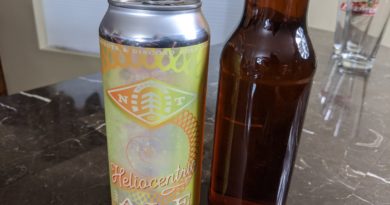Unsolicited Answers to Homebrew Questions
Really, the inspiration for this episode is part viewer feedback, and part questions that seem to comes in clumps while we’re surfing the internet.
We appreciate all the feedback from our viewers, keep them coming! We love the tips, and will answer any questions we can to the best of our ability. We’ll have to try to get these videos out a little more frequently, this one was in the queue for a long time. The text of these show notes ended up being a little longer than YouTube would allow, luckily here on our website you can see all of them!
This post contains some affiliate links. It doesn’t cost you anything to use these links and helps support the channel. We’ll never link to products that we wouldn’t buy ourselves, and we aren’t being paid to review this products.
In our “Happy Accident or Horrible Mistake Video” had some Facebook comments from Daniel Flaherty about their mishaps.
There’s been a lot of questions and comments about yeast starters, re-pitching, reusing, and or washing and rinsing yeast. We suggest absolutely using a starter when you’re reusing yeast, it’s an easy way to see if the yeast is alive and viable. Jeremy like to rack a second beer on top of the yeast cake from another batch.
A common strategy when brewing a really big beer is to brew a lower session beer with the same yeast, and then rack the finished beer off of the yeast cake, and then put your wort for the big beer onto the yeast cake of the smaller beer. Watch out for blow off though, the yeast will absolutely take off.
Mike’s usual strategy, as you’re probably aware, is to make a big starter and then save some off in a mason jar for a brew later on.
In our “Hands on Review of White Labs Pure Pitch Next Gen Packaging Homebrew Yeast”
Mike M asked if we thought having yeast being ready and rearing to go is a big benefit or not, and if the Pure Pitch Next Generation makes up for this. We do in fact think it’s important, and in our limited experience with the Purepitch, that yeast was ready to go. Maybe over time when the yeast isn’t as fresh a starter might be a good idea, or even to add a little of the wort mixed in with the yeast. Our friend John does exactly that and talks about it in our “Advanced Yeast Starters and the Fast Ferment Test” episode.
@Katie Skow from White Labs said they were going to have their 2023 Vault lineup out very soon. We kind of sat on this video for awhile though, but they are in fact out there. Check out https://www.whitelabs.com/the_vault?id=60 They are all Pure Pitch Next Generation packaging.
In some feedback from our “Fermzilla Tips and general Kegland Product Discussion” @Stephen said that he loves Kegland, and recently bought the Brewzilla Gen 4 and the Rapt Pill. We actually have Stephen coming onto a show to talk about his Rapt Pill, temperature controller, and the Rapt ecosystem. Stay tuned for that.
If you’re interested in checking them out, the Rapt Temperature Controller can be found here, and we quickly mention the RAPT Temperature controlled fermentation chamber, we said we thought it was $2k, it’s actually $1,299 but right now on sale for $999.99.
We had some excellent feedback on our “Closed Transfer of Finished Homebrew Beer – Fermenter to Keg” episode.
Really, get yourself a Fermzill All Rounder instead. You can watch our video about it here. Check out the Fermzilla fermenters at MoreBeer, you can get one relatively inexpensively, and then add a pressure kit.
@Joshua Pinter gave us a great tip about completely closing the transfer
“An even better way to do this is making it a closed loop transfer by connecting the gas out of the keg to the gas in of the fermenter. As the liquid fills into the keg, it pressurizes the CO2 in there and pushes that out to the fermenter to displace the liquid going out. This saves CO2 and means you don’t even need a CO2 tank/line nearby.”
In our “Homebrewed Peach Kettle Sour with Philly Sour Yeast Recipe and Review” @Mdspider mentioned making a apple mango philly sour hard cider that his friends love. 2Gallons of Kirkland Mango Juice / puree (it’s very pulpy) and 2 gallons of apple juice. Ferments for 30 days, and he adds 1/2 pound of dehydrated mango slices in secondary. Mike is absolutely going to try this.
From our “No Chill Experiment #1: American Pale Ale and Scottish Export” @Ryan Hannigan said he would like to see some parts of the brew day, and the no-chill technique we used.
In our “Reconditioning / Rebuilding a Corney (Cornelius) Keg for Homebrew Use” Youtuber @JCinsaniac said he uses a sous vide probe in the open keg, set to 175 for an hour to soak (with water I assume), or he adds some PBW to that to wash it out. He does the same thing for plastic fermenters, but first finds out their max temp, and he shoots for 5 degrees below that.Youtuber Todd Porter said that if you put a couple of drops of fermacp in the bucket, you’ll prevent the foam with the sanitizer.
In our “Boel iTap Homebrew Equipment Review” @Common Era Brewing said
“Great video! I actually really appreciate you showing all of the hiccups, spills, tripping while leaning over the kegerator, etc! So many of the brew-tuber videos are so polished that it can feel like I’m the only clumsy forgetful one!”




